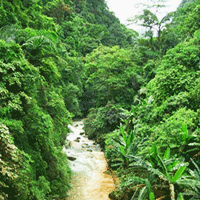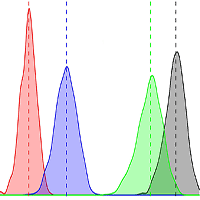
Endangered and endemic species increase forest conservation values of species diversity based on the Shannon-Wiener index
Qingfeng Song, Bing Wang , Jinsong Wang, Xiang Niu
iForest - Biogeosciences and Forestry, Volume 9, Issue 3, Pages 469-474 (2016)
doi: https://doi.org/10.3832/ifor1373-008
Published: Jan 02, 2016 - Copyright © 2016 SISEF
Research Articles
Abstract
Species diversity is the most important component of biodiversity and plays an important role in maintaining forest ecosystem processes and stability. The assessment of the forest conservation value of species diversity is commonly carried out based on the Shannon-Wiener index. However, endangered and endemic species were always ignored in previous studies aimed at assessing the conservation value of forest species diversity. In this study, the conservation value of forest species diversity was assessed in two representative provinces of southern and northern China (Yunnan and Jilin provinces, respectively). The conservation values of species diversity for different forest types was calculated based on the standard Shannon-Wiener index, and on two different indexes derived from it by including: (i) an endangered species index (Ei) based on the China Species Red List; (ii) an endemic species index (Bx) based on the geographic distribution of the species considered. The results showed that the inclusion of the endangered and endemic species indexes dramatically increased the forest conservation values in these two provinces. The total conservation value in the Yunnan province was 268.65 billion yuan yr-1 based on the Shannon-Wiener index, 269.78 billion yuan yr-1 after including Ei in the assessment, and 324.44 billion yuan yr-1 after the inclusion of both Ei and Bx. In Jilin province, the total conservation value was 123.94 billion yuan yr-1 based on the standard Shannon-Wiener index, 124.60 billion yuan yr-1 after including Ei, and 125.74 billion yuan yr-1 after including both Ei and Bx in the assessment. Therefore, the inclusion of endangered and endemic species in the assessment of forest conservation values, as well as other aspects related to biodiversity like the presence of ancient trees, can contribute to the protection of endangered and endemic species in these two provinces of China.
Keywords
Species Diversity, Conservation Value, Endangered Species, Endemic Species
Authors’ Info
Authors’ address
Bing Wang
Jinsong Wang
Xiang Niu
Research Institute of Forest Ecology and Environmental Protection, Chinese Academy of Forestry, Beijing 100091 (China)
Corresponding author
Paper Info
Citation
Song Q, Wang B, Wang J, Niu X (2016). Endangered and endemic species increase forest conservation values of species diversity based on the Shannon-Wiener index. iForest 9: 469-474. - doi: 10.3832/ifor1373-008
Academic Editor
Chris Eastaugh
Paper history
Received: Jun 09, 2014
Accepted: Aug 18, 2015
First online: Jan 02, 2016
Publication Date: Jun 01, 2016
Publication Time: 4.57 months
Copyright Information
© SISEF - The Italian Society of Silviculture and Forest Ecology 2016
Open Access
This article is distributed under the terms of the Creative Commons Attribution-Non Commercial 4.0 International (https://creativecommons.org/licenses/by-nc/4.0/), which permits unrestricted use, distribution, and reproduction in any medium, provided you give appropriate credit to the original author(s) and the source, provide a link to the Creative Commons license, and indicate if changes were made.
Web Metrics
Breakdown by View Type
Article Usage
Total Article Views: 57765
(from publication date up to now)
Breakdown by View Type
HTML Page Views: 47970
Abstract Page Views: 3543
PDF Downloads: 5062
Citation/Reference Downloads: 28
XML Downloads: 1162
Web Metrics
Days since publication: 3574
Overall contacts: 57765
Avg. contacts per week: 113.14
Citation Metrics
Article Citations
Article citations are based on data periodically collected from the Clarivate Web of Science web site
(last update: Mar 2025)
Total number of cites (since 2016): 12
Average cites per year: 1.20
Publication Metrics
by Dimensions ©
Articles citing this article
List of the papers citing this article based on CrossRef Cited-by.
References
Advances in species endangerment assessment. Chinese Biodiversity 12 (5): 534-540.
Gscholar
Specifications for assessment of forest ecosystem services in China. LY/T 1721-2008, Forestry industry standard of the People’s Republic of China, Standards Press of China, Beijing, China, pp. 3-5.
Gscholar
Study on forest ecosystem services in Jiangxi province and Dagangshan. Chinese Academy of Forestry, Beijing, China. pp. 25-26. [in Chinese]
Gscholar
Research on the assessment of forest biodiversity in Mt. Tai. Shandong Agricultural University, Tai An, China, pp. 17.
Gscholar
Report of the United Nations conference on environment and development. United Nations Publications, New York, USA, pp. 2.
Gscholar
China red data book of endangered animals. Science Press of China, Beijing, China, pp. 3-5.
Gscholar
Assessment of forest ecosystem services value in China. Scientia Silvae Sinicae 47 (2): 145-153.
Gscholar
The assessment of forest ecosystem services evaluation for shrubbery-economic forest-bamboo forest in China. Acta Ecologica Sinica 31 (7): 1936-1945.
Gscholar
China species red list: I. Higher Education Press, Beijing, China, pp. 35-98.
Gscholar
Discussion on models for species diversity and suggestion on a comprehensive model. Ecological Modelling 9: 1-15.
Gscholar
Towards the satisfying model for biological diversity. Ekologia 17 (3): 129-141.
Gscholar

















